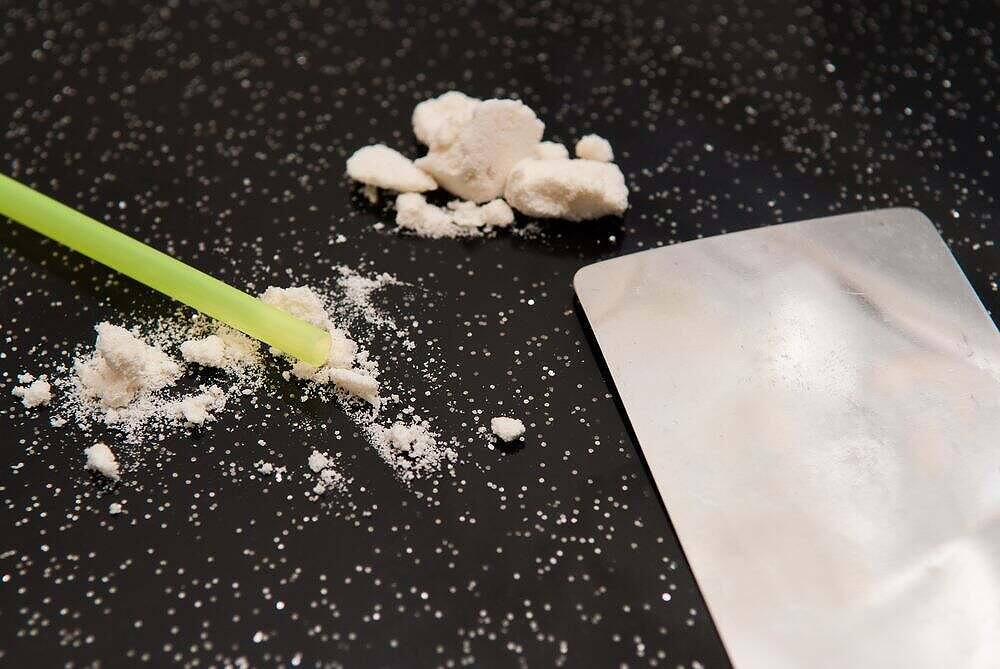Soon after its refinement in the 19th century, cocaine was prescribed for almost any illness. It effectively became a recreational drug, as much of its first medical use was more likely a matter of abuse or addiction.
For thousands of years, inhabitants of the Andes chewed or brewed coca leaves into a tea for refreshment and to relieve fatigue, similar to modern customs of chewing tobacco and drinking tea or coffee. The Indians considered the leaf to be sacred and essential to life.
During the time the Spanish conquered the Inca Empire in the 16th century, they attempted to ban coca chewing. They relented when they discovered that Indians working in the silver mines would work harder if given their daily allotment of coca.
Coca leaf chewing remains, even now, an important part of traditional Andean culture and nutrition.
Chewing coca leaves is done fresh or dry. They are mixed with a small quantity of alkaline material such as ash, lime, or powdered seashells, and the whole wad is sucked on for a half-hour or so. Saliva, mixed with the alkaline powder, leaches the drugs from the leaves and is swallowed. Eventually, the leftover residue is spat out.
Scientists were interested in the stimulating potentials of the coca plant and wanted to discover more. In 1860, Albert Nieman, a chemist from Germany, isolated cocaine from coca leaves for the first time.
This development led Carl Koller, an Austrian ophthalmologist, to employ cocaine as an anaesthetic in surgery.
Then people realised the quick-acting advantages of snorting cocaine around 1905.
Illicit cocaine is usually sold as a white powder or as an off-white chunky material named Crack. The powder, cocaine hydrochloride, is often diluted with a variety of substances.
Where is Cocaine Grown?
Cocaine originally came from Western South America, and today it is still grown mostly in this region. There are reports of mass coca production in Colombia and Bolivia.
The plants also thrive in tropical forests in Peru, where it is humid, and conditions are ideal. It is also popular due to the isolation, which makes surveillance and shutting down coca farms challenging.
Coca was also grown in Java, Taiwan and Africa, but due to a combination of climate and legal issues, it is mainly restricted to South America. For the moment, 98% of all coca for producing cocaine comes from South America.
How is Cocaine Made?
Cocaine is sometimes made in super-labs in the jungles where it is grown. However, it is thought that Venezuela, which doesn’t cultivate as much cocaine, is a hotspot for production.
In the raw form, coca leaves don’t have the same effect as cocaine, which must be synthesised in a laboratory. The leaves provide a mild stimulation not comparable with the powder sold on the streets throughout the world.
Environmental Impact of Cocaine
Using large areas for coca cultivation has led to major deforestation in biodiverse areas. Pesticides used to improve yields also damage nearby jungle plants. There are also initiatives by government agencies to mass-spray poisonous chemicals over coca plantations to stop the illegal growing and trade in cocaine.
Distribution of Cocaine
Cocaine is exported around the world illegally and legally. Huge amounts of cocaine are moved by gangs and criminal enterprises throughout the world. The drug is popular in the Western World and areas of Asia. It is particularly available in the United States of America.
It is illegal in many places but decriminalised in some of the regions where it is most common. Some countries, such as Australia, allow it for medical reasons, but in much of Europe, it is either illegal or at least decriminalised but not allowed.
Cocaine Addiction
Unsurprisingly, the places where cocaine is most prevalent have the worst numbers of people seeking help with cocaine addiction. The rise of crack cocaine in the USA and worldwide caused an increase in the issue of dependence. Crack cocaine is much more addictive than powder cocaine and was responsible for a huge increase in deaths from cocaine use.



